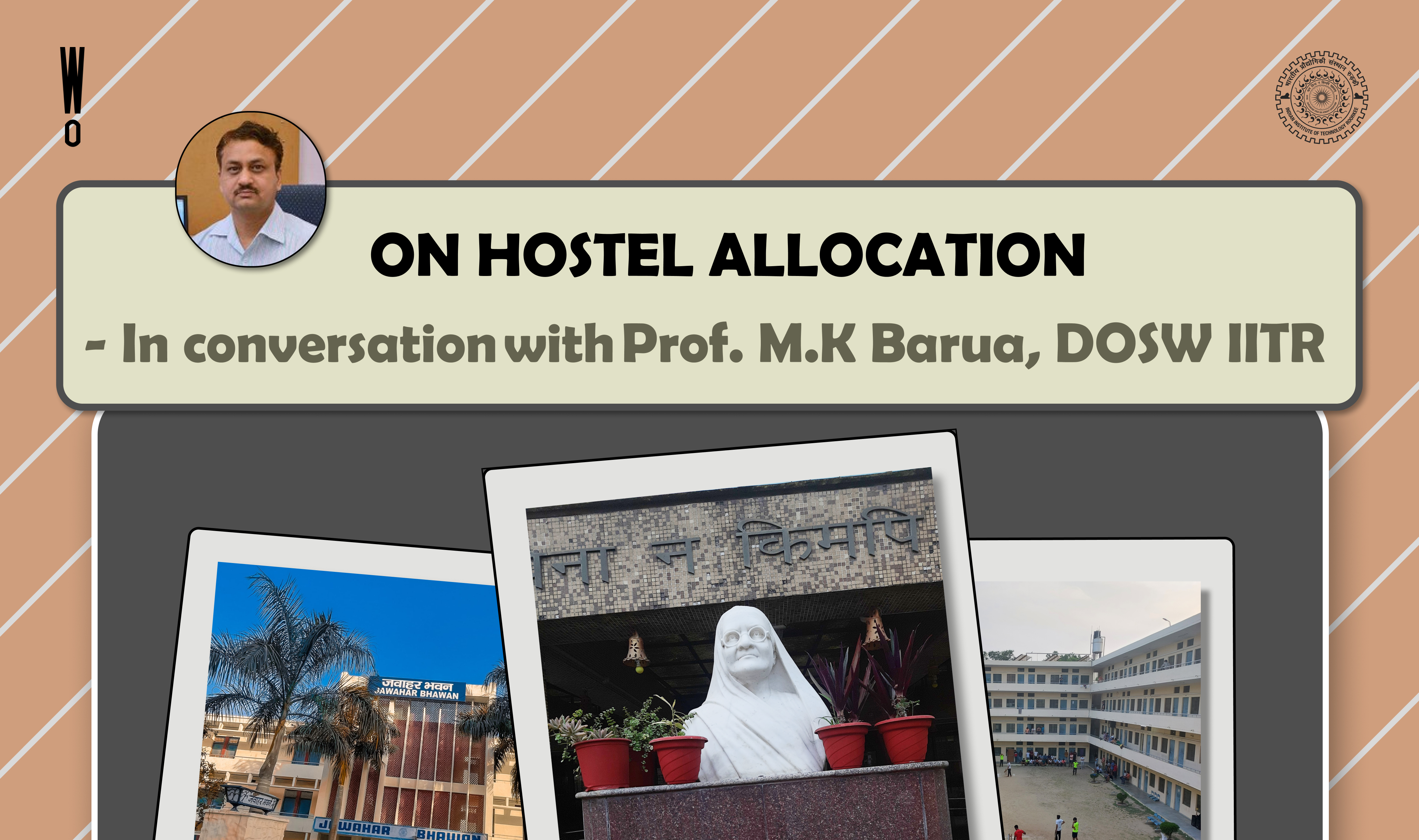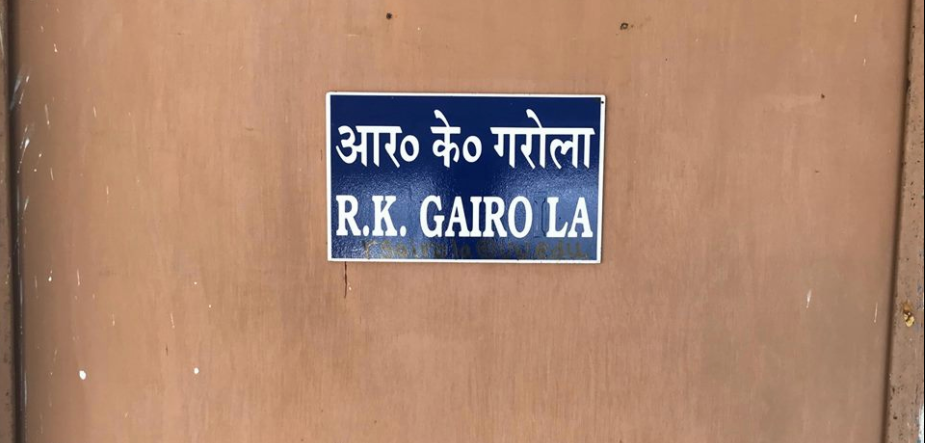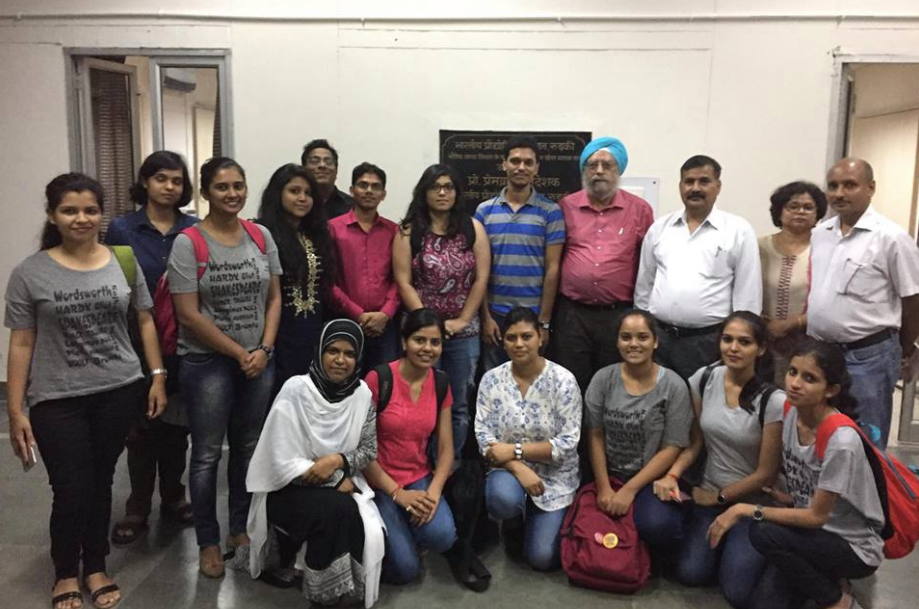

Body of IITR

I have had the privilege of witnessing the Institute evolve for the better since the day I arrived in June 2015. At that time, there was a major ruckus about 73 students being rusticated from the Institute. After speaking to students and having read media reports, I thought about ways that my identity, in addition to my knowledge and teaching, could best serve students – especially those who feel disenfranchised or excluded. In this respect, the previous DOSW (Professor D.K. Nauriyal) also recognized the gendered bias of a curfew for girl students, and quashed it. I recall sitting in his office and him asking for my opinion of this directive. I remember replying that for me there were two issues: (1) If one says that this is for the girls’ “safety,” then does that mean that the campus is unsafe? (2) If gender bias is unconstitutional in the world’s largest democracy, then isn’t a curfew for girls also problematic?
I would later discover that my view was shared by many. So, I wasn’t necessarily adding anything new or “western”, but that IIT Roorkee is at a very exciting time of its reincarnation as a world-class university. It has grown tremendously since I arrived. KIH has totally been renovated, and now Himgiri Apartments across from the Century Gate offer a serene and contemporary living environment to new faculty members. Last month, Thomso was centered on the main playing fields in front of the Thomson Building, and a new building is being constructed adjacent to those fields. A massive residential complex as well as new homes for HSS and other departments will be constructed in the coming years. New faculty with international credentials are being interviewed across campus, and this has created an exciting sense of anticipation and yearning for the future to be here now. This investiture in the Institute’s destiny is the greatest thing that we all have to look forward to, and we all should be supportive agents of positive change in its service.
I will never forget the first week of classes in July 2015. The moment I walked into the lecture halls and tutorial classrooms and opened my mouth, students were stunned! Many of them said that they had never before met someone who looked like them but talked “like X-Men”. My American English accent was a novelty, and I used this as a tool for thinking about intercultural communication in all of my English classes. Since I was the first, the Institute made many accommodations for me. This was a learning process for both of us, and there have of course been some challenges. For example, FRRO police registration and getting a PAN card were difficult for me since I was not fluent in Hindi at the time. Since then, I am proud to say that my Hindi has gotten much better! But the Institute might consider eventually opening a Centre for Global Exchange as a resource centre not only for international faculty and students, but also as a nexus for international study abroad. As we are currently preparing a proposal for IIT Roorkee to be designated a world-class Institute of Eminence, I have shared this and other candid recommendations with the IITR faculty email list.
I was very lucky to have had many kind individuals, in both the Thomson Building and in the HSS Dept., help me accomplish the many bureaucratic tasks that I had to complete. But this ease has not been the case with other foreign visitors and students. I thus believe that a long-term international strategy would not only include the establishment of the Centre for Global Exchange, but should be coordinated with a very strong, centralized network of alumni and associates of the Institute – those with clear stakes in the wellbeing of IIT Roorkee – who can serve as Institute Ambassadors abroad and online. This Centre could serve as a haven for international faculty who face hostility from others, and could in fact serve as a home away from home. Another idea involves two of the main issues that all of us have, but which pose particularly acute problems for international faculty: transportation and food. There needs to be a greater variety of options with more low-carb, low-oil options. Also, it is absolutely essential that food venues stay open later now that the departments are all open 24-7. I also many times wished that the Faculty Club in KIH could be transformed into a CCD where faculty members could congregate and swap ideas like in the great coffee houses of Paris.
Roorkee’s relative isolation and the odd timings of train and bus connections to and beyond Delhi is a very big problem. The Institute, in my view, should heavily lobby for greater connectivity to at least Delhi and also run twice or thrice weekly shuttles between the Roorkee and Noida campuses as such shuttles are standard on all other multi-campus universities around the globe. Finally, the word “foreign” has very negative connotations around the globe, and it should be dropped as much as possible in favour of the word “international”. I would encourage students to read the brilliant articles in The Wire by Professor Pushkar of The International Centre of Goa (ICG). He is perhaps the greatest critical writer of the ways in which India’s higher education system can become globally competitive and nationally sustainable. I feel that IIT Roorkee is strongly positioned to take the lead, and also establish a London or Washington centre in the future. To this end, I think that fund-raising abroad should be intensified and streamlined as quickly as possible.
I think the key lies in a strategy of hiring quality new faculty as quickly as possible along with the expansion of a number of courses and the way that we even think about coursework here. In other words, the Institute’s academic and industrial collaborations will be improved by pedagogical innovation. Radical changes in the way that we teach, think we teach, and our core teaching philosophies. As we hire new faculty with international collaborations, we must also ensure that our PhD students are never teaching more than one tutorial section as this often harms their research. And as a means of mentoring, each supervisor should commit to observing their Research Scholar in at least 1-2 tutorial classes before the student goes on the job market. This way, the Supervisor him/ herself can speak to the job candidate’s teaching/ leadership/ elocution skills. Indeed, these days, especially in European countries including Germany and Sweden, PhD Research Scholars are treated as colleagues and employees rather than subaltern students. Likewise, senior colleagues in all the departments can think of new and creative ways to mentor their junior colleagues; in this vein, I was very lucky to have been mentored and supported by Professor Rashmi Gaur amidst some very traumatic and disheartening situations.
I also appreciate the notion of a multi-lingual campus at Roorkee as one anchor in what we could call the Roorkee Research Triangle (RRT). The RRT forms a core saturation of geographical stakeholders in Roorkee, Saharanpur, and Noida. The Institute’s assets in all three places in my view should be strategically harnessed to the service of the region, nation, and world. This will add to the overall goal of swiftly moving up in the global rankings while nurturing entrepreneurial ethos, academic rigour, national service, and global citizenship. In other words, I believe that academic and industrial collaboration would best benefit through a diverse distribution of our finest and smartest minds in all three campuses. If IIT Roorkee is able to capture the much-coveted designation of Institute of Eminence, it will have a grant of 1,000 crore INR to develop into a world class-ranking university. In the interest of this shared goal, students should also galvanize and strategize on how to complement the faculty and administration in making this dream a reality. The Institute is much stronger and more competitive when all of our minds come together as a team.
Haha, oh wow! Really? Okay: let me first give the politically-correct but honest answer and then end on a more candid note. The greatest thing about IIT Roorkee, for me is you all, the students! You all made every minute worth being here, and the reason why I will continue to have a special bond and interest in this place. Of course, I am also an Indian American who moved here from New York City, so one would have to have special investment in Uttarakhand to leave The Big Apple.
In fact, my father was born in Dehradun and I personally immersed his ashes at Har ke Pauri in Haridwar after he passed 14 years ago. My father was also a professor, and was literally requested by Pundit Jawaharlal Nehru to return to India and serve the nation after he had moved to Germany. In this vein, I have indeed walked in his footsteps by literally joining in the region of his birth and death. But if I had familial and ancestral ties before I came to Roorkee, they have been much further deepened by the amazing students I have had here. I always have joked with them in class that they might have one professor, but I have more than thirty! The learning experiences and practice in Hindi I have had, as well as intercultural exposure with the classroom as an interactive contact zone, has been truly life-changing.
That said, I think students here need to be more focused. In my opinion, there are too many days missed due to festivals, holidays, breaks, etc. When all this happens, I see students’ concentration falter. Students, especially those from the vernacular (non-English) mediums should resist shyness and speak up in class. No one speaks English perfectly, and our classrooms are human resource laboratories in which we need to feel safe experimenting. As much practice the better! In fact, I forced myself to speak in Hindi after my first month – not because others could not speak English, but because I felt it was a once in a lifetime opportunity to really learn and embody Hindi with “my own people.” In a globally competitive and competent world, the top most students cannot afford to allow their concentration falter. At the same time, I do recognize that professors and lecture topics can be boring and that the Indian educational system is relatively rigid in terms of what you can study.
Still, IIT Roorkee affords all of us a beautiful environment with few distractions and some of the brightest students in the world. In this context, concentrations should be intensified, attendance should be taken very seriously, and research output should increase. But my regard for you all will soon be official: I have dedicated my most recent peer-reviewed essay on queer zombies and monsters in the fiction of Michelle Cliff and Shani Mootoo to the students of IIT Roorkee! That publication will be up online in the next couple of weeks in the scholarly journal Wagadu – I hope you guys like it despite its admittedly dry, academic tone!
Let me first say that I will not really be leaving Roorkee – in fact, I will continue to be working with many junior colleagues and a few senior ones to continue advancing the Institute’s stakes throughout the world. I will, in other words, be working from the outside in! Next Spring, a co-authored book titled Migration from Garhwal: Gender and Home Economics in Rural North India and co-authored with Professor D.K. Nauriyal will be published by Lexington Books. I am also working on my second monograph with Routledge/ Taylor & Francis Group which is tentatively titled Digital Homes: Identity & Agency in Postmillennial India. Both of these book projects are collaborative efforts which have been and will continue to be shaped by a number of my colleagues here at IIT Roorkee. I am also working on a book project with Professor Rashmi Gaur, and we hope to finalise the Call for Papers (CFP) by late December so that I can distribute it and spread the news at the largest annual convention in the world for teachers and scholars of language and literature – the annual convention of the Modern Language Association (MLA) in New York City this coming January.

I am moreover working with a wonderful group of junior colleagues to institute a campus-wide Institute Faculty Interdisciplinary Lecture Series (IFILS), and I will continue to work with this team once I formally join my new academic post. I will be seeking approval to serve three of my students as an international co-supervisor, and I will be working with our Professor S.P. Singh in his capacity as HOD of HSS over the next year to secure external collaborative funding to support a Centre for Uttarakhand Development Studies. My stakes in IIT Roorkee are as deep as my ancestral roots, and I will always be there for the students and faculty members who have been kind, helpful, and supportive to me. I will also continue to mentor a number of BTech, MSc, and PhD students with whom I have developed a good rapport, and will help them as much as possible to write compelling Statement of Purposes, grant and fellowship applications, and job letters. Finally, I hope to be able to visit this beautiful campus when I am back in India, and hopefully would be able to give a guest lecture or international workshop. The fact is that the avenues and possibilities for international collaboration are limitless, and as the Institute’s first U.S. citizen faculty member I must lead the way.
The best thing about this question is that it allows me to reflectively map out my experiences over the last 2.5 years even as my career moves forward. When I first came, Justin Bieber’s song “Sorry” was playing throughout India, as was the song “Dil Dhadakne Do” from the Bollywood film of the same title. Coldplay’s video and song “Hymn for the Weekend” with its selective representations of India came out as my second year here began, and their epic, feel good song “Up and Up” was released as I was deciding to change jobs. When I visited Delhi a few times, I heard “Let’s Nacho” in a number of restaurants, and of course Ed Sheeran’s lacklustre hit “Shape of You” sticks out in my mind only because of the superb dance video made by our very students!
Kean’s beautiful and guitar-heavy “Crystal Ball” cheered me up when I was worried about my future in India, as did Billy Ocean’s 1980s hit “When the Going Gets Tough (The tough Get Going)”. When I was having a hard day (and they were many of the them), I used to blare “Move Along” by The All-American Rejects and “Shake It Off” by Taylor Swift. Finally, when I left Seattle after my PhD, Arcade Fire’s awesome song “Reflektor” was all over the city. Before I left New York and joined IIT Roorkee, I saw Arcade Fire play, so this band has in a sense marked my migrations across the globe. As I am leaving, my Arcade Fire anthems are “Electric Blue” and “Everything Now”.
and no one can understand his English or Hindi due to his very heavy American accent. So, he puts “Despacito” on the jukebox since it’s entirely in Spanish!